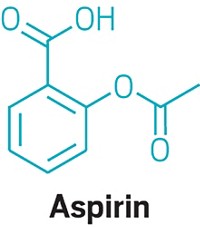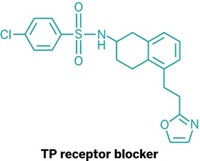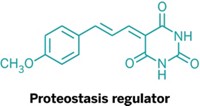Advertisement
Grab your lab coat. Let's get started
Welcome!
Welcome!
Create an account below to get 6 C&EN articles per month, receive newsletters and more - all free.
It seems this is your first time logging in online. Please enter the following information to continue.
As an ACS member you automatically get access to this site. All we need is few more details to create your reading experience.
Not you? Sign in with a different account.
Not you? Sign in with a different account.
ERROR 1
ERROR 1
ERROR 2
ERROR 2
ERROR 2
ERROR 2
ERROR 2
Password and Confirm password must match.
If you have an ACS member number, please enter it here so we can link this account to your membership. (optional)
ERROR 2
ACS values your privacy. By submitting your information, you are gaining access to C&EN and subscribing to our weekly newsletter. We use the information you provide to make your reading experience better, and we will never sell your data to third party members.
Environment
New drug lead for Parkinson's disease
June 25, 2007
| A version of this story appeared in
Volume 85, Issue 26
Parkinson's disease, which kills off dopamine-producing neurons, is associated with the clumping of misfolded α-synuclein protein into "inclusions" in the brain. Recent evidence supports the notion that neurons form these inclusions to reduce exposure to smaller but more neurotoxic α-synuclein aggregates. Last year, Harvard Medical School biologist Aleksey G. Kazantsev and colleagues identified compounds that reduce toxicity and promote inclusion formation in cellular disease models (Proc. Natl. Acad. Sci. USA 2006, 103, 4246). The researchers discovered that the compounds inhibit the protein sirtuin 2, which interacts with another protein that could conceivably transport small aggregates within cells. Kazantsev and coworkers now have designed and tested 200 additional compounds for their ability to inhibit sirtuin 2 (Science, DOI: 10.1126/science.1143780). The researchers identified several inhibitors with increased potency. These compounds protect dopaminergic neurons from α-synuclein toxicity in cell cultures and in a fruit fly model of Parkinson's, suggesting sirtuin 2 is a promising target for treating the disease.






Join the conversation
Contact the reporter
Submit a Letter to the Editor for publication
Engage with us on Twitter